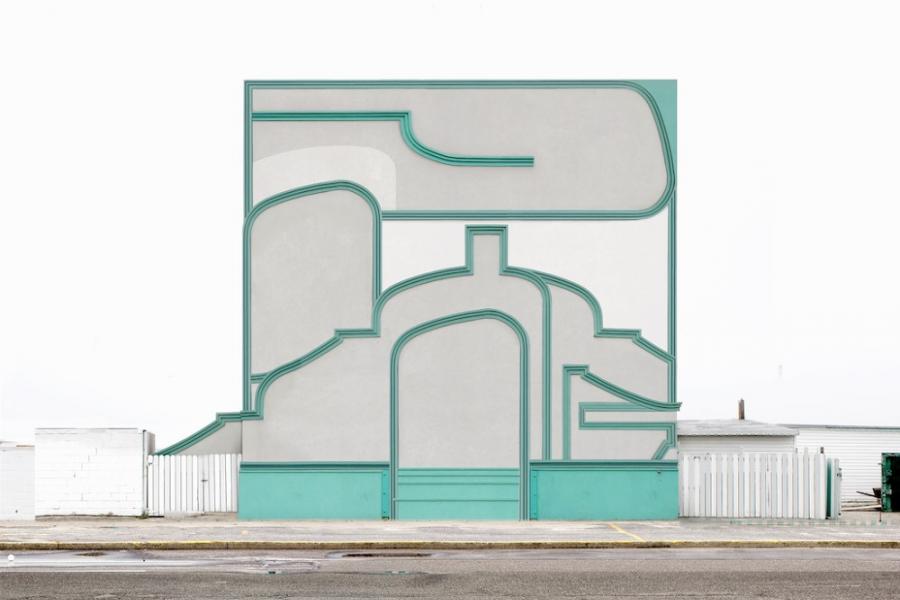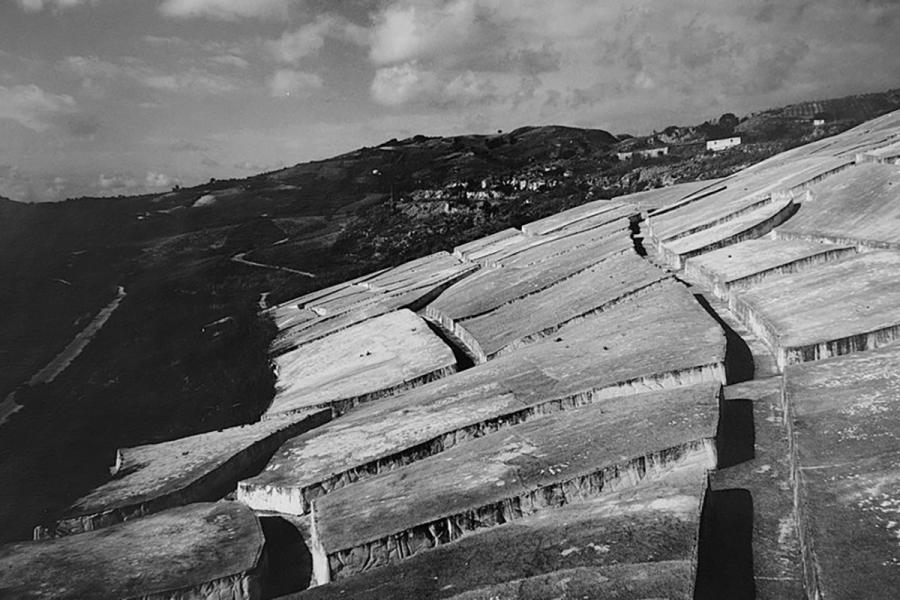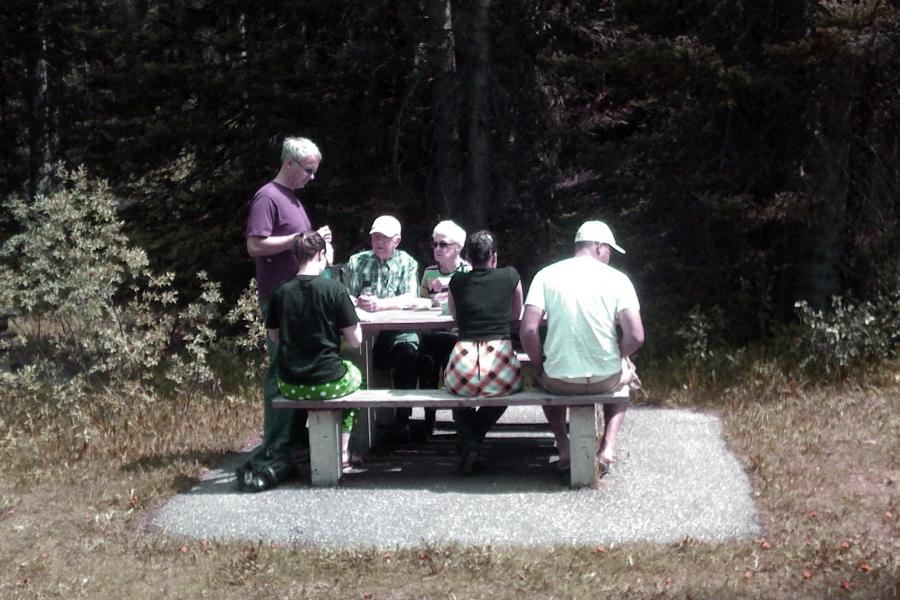ED3/AMP1 2021 - 2022 Studio descriptions
Studio presentations will take place on Monday, August 23 at 10:00am. Information on the remote session has been distributed to students via email. See the 2021 - 2022 Welcome Letter for details about the studio selection / assignment process.
CHIMERICAL / MONGREL STUDIO

Learn more about CHIMERICAL / MONGREL STUDIO
chi·me·ri·cal | \ kī-ˈmer-i-kəl: (adj.) existing only as the product of unchecked imagination : fantastically visionary or improbable
mon·grel | \ ˈmäŋ-grəl : (n.) an individual resulting from the interbreeding of diverse breeds or strains especially : one of unknown ancestry mid-15c., “individual or breed of dog resulting from repeated crossings or mixture of several different varieties,” from obsolete mong “mixture,” from Old English gemong “mingling” (base of among), from Proto-Germanic *mangjan “to knead together” (source of mingle), from a nasalized form of PIE root *mag- “to knead, fashion, fit.” With pejorative suffix -rel.
“Before he goes into the water, a diver cannot know what he will bring back.” ~ Max Ernst
This studio presents a simple set of parameters that start on the outside of established methodologies of architectural design with a desire to find a way back inside through an unexpected side entrance . By following our intuition, embracing chance, and foraging for ideas we will aim to expose, splice, and nurture what is found into meaningful compositions, places, and stories.
Beginning with the analysis of two distinctly different found objects, we will explore ways to combine them, undertaking a process that transforms these separate things into a new, other entity or dyad. Experimenting with carefully drawn and built/modelled physical operations (i.e. grafting, stitching, blending, sleeving, nesting, lashing, etc.), we will fuse our objects via their own unique forms and languages of natural selection. While the original objects will be expressed and/or retain recognizable features, they will ultimately evolve into something other, both familiar and strange. The resulting hybrid will be manifested in a way more akin to discovery, being found and curated, or the result of opportunistic conditions rather than that of willful making. This exercise will lead into and inform the process for a comprehensive site and architectural proposition in the second term where a similarly divergent pairing will undergo synthesis.
Part of this studio’s inquiry lies in how we as designers can recognize and avoid the habitual, the reliance on what we think we already know, and outcome expectation. How can this process be a part of a leaner, ecologically sensitive approach to sustainable practices and ways of dwelling? What are our motivations and how can we suspend them, at least temporarily? Can a form of dream logic, an uncanny and wild originality resulting from assemblage of known or familiar components be used to fuel a design process? Where and when does exploration end and authorship begin, where do our motives and desires enter the equation?
“We only dream of images we already have inside of us.” ~ David Lynch
Image Credits:
1. “Untitled”, Square in Square Series, Oliver Michaels, 2015
Before After Now

Learn more about Before After Now
“I confess I do not believe in time. I like to fold my magic carpet, after use, in such a way as to superimpose one part of the pattern upon another. Let visitors trip. And the highest enjoyment of timelessness – in a landscape selected at random – is when I stand among rare butterflies and their food plants. This is ecstasy, and behind the ecstasy is something else, which is hard to explain. It is like a momentary vacuum into which rushes all that I love. A sense of oneness with sun and stone.”
Vladimir Nabokov – Speak, Memory (1966) 1
In a discussion of architecture’s capacity to manifest the presence of history, Peter Zumthor refers to Vladimir Nabokov’s sense of time, telling Mari Lending that “Everything happens in the present.”2 Recognizing that “before” happened as “now” and that soon “now” will be “before” leads our minds to wander down the path of history’s direct and fluid connection to the current moment; still here and still happening. The built world around us functions as both backdrop and participant to this tumbling stream of matter and action. Perhaps what is “your house” used to be someone else’s home. At some point, its many studs and stones likely existed somewhere else entirely – a softwood forest or limestone deposit. Nelson Goodman Writes:
“The many stuffs, matter, energy, waves, phenomena, that worlds are made of are made along with the world. But made from what? Not from nothing, after all, but from other worlds. Worldmaking as we know it always starts from worlds already on hand; the making is a remaking.” 3
Architectural invention’s capacity for remaking through creation, destruction, and reappropriation is well established through the history of spolia, the folding of readymade architectural elements into new assemblages. These architectural montages are historically read as constructions of convenience, economic necessity, or violence and conflict.4 They subsume the pre-existing, declare the victorious, and layer history into a pastry-like crust of architectural memory. When read generously, the resultant constructions hold auras of depth and spirit. As suggested by spolia’s Latin origin, spoils of war, they equally speak about power and subjugation.5
Before After Now is intended as a studio to reappropriate and challenge the notion of spolia, asking questions about where the materials, images, and ideas that populate the built world arrive from and depart to. If we read developed form and processed material as appropriations of what precedes them, are they not a relative of spolia as well? Every resource extracted and every site excavated might be read as a conflict, pregnant with the bittersweet promise of possibility. Beyond the important and pragmatic concerns of efficiency and re-use, architecture can elect to honor what precedes it, while looking forward to what will follow. Examining the layers of historic and geographic texture that comprise Manitoba, Before After Now will critically contemplate architecture’s capacity to remake. By working to see instead of merely look, we will overturn stones, rediscover our assumed surroundings, and mindfully seek out our local architettura di spoglio; our own architecture of spoils.6
“Architecture is a kind of corporal time machine where the past, the present, and the future are related architecturally through memory.” 7
Marco Frascari, Monsters of Architecture
“It is the ashes that return to ashes, the dust to dust as ‘pre-loved’ bricks and mortar are re-invested, yesterday’s proud walls become the hardcore of tomorrow’s foundations, and sometimes vice versa too. On what is often referred to as a ‘shrinking planet’… spolia increasingly becomes the morbid air that we breathe, a form of death in life.” 8
Paul O’Kane, Spolia as Speculation
Images:
Burri, Alberto. Grande Cretto di Gibellina. 1984-2015. Land art Installation, Gibellina, Sicily.
Photograph by Aurelio Amendola, 2018.
Notes:
1 Nabokov, Vladimir. Speak, Memory; an Autobiography Revisited. New York: G.P. Putnam’s Sons, 1966, 137.
2 Zumthor, Peter., Mari Lending, and Hélène. Binet. A Feeling of History Zurich: Scheidegger & Spiess, 2018, 33-34.
3 Goodman, Nelson. Ways of Worldmaking Indianapolis: Hackett Pub. Co., 1978, 6.
4 Brenk, Beat. “Spolia From Constantine to Charlemagne: Aesthetics Versus Ideology” Dumbarton Oaks papers 41 (1987): 103-109.
5 Ibid.
6 Frascari, Marco. Monsters of Architecture: Anthropomorphism in Architectural Theory Savage, Md: Roman & Littlefield, 1991, 22.
7 Ibid. 61.
8 O’kane, Paul. “Spolia as Speculation.” Journal of Art Practice 15, no2-3 (2016): 204-213.
You Don't Even Know What It Is That You Love...

Learn more about You Don't Even Know What It Is That You Love...
Silence, Stone, Bugs, Peas, Rocks, Iron, Cars, Updos, Plastics, Bawling, Rats, Racoons, Squirrels, Crows, Squid, Seaweed, Billboards, Atoms, Republicans, Cars, Lagoons, Sewers, Shrines, Dandelions, Weeds, Laundry, Centipedes, Circles, Shadows, Maggots, Conversations, Freeways, Earworms, Leeches, Molds, Garbage, Urinals, Paths, Willows, Bottles, Ennui, Gutters, Kitchens, Geometry, Windows, Slime, Dreams, Sayings … Picnics
This studio will explore various dimensions of Donna Haraway’s notion of Staying with the Trouble as a way to transcend pathological materialism + consumption in our culture.
Natural Habitat / Passages
Learn more about Natural Habitat / Passages
The studio begins with a month with Paul in Natural Habitats and finishes the year with Passages with Brian. The two are complementary but autonomous.
Natural Habitat: Cultivating the Domestic Façade (08 Sept to 07 Oct)
A residential dwelling is often conceived as an exclusive domain: a controlled refuge from the discomforts, fluctuations, and perceived threats of the natural environment. Enforcing this boundary is the exterior facade, which mediates a variety of environmental conditions — wind, heat, sunlight, moisture and sound — for the comfort and wellbeing of its human occupants. In light of rapid climate change and the subsequent degradation of ecosystems around the world, Natural Habitats aims to challenge this anthropocentric approach by expanding the role of facades to include the survival and prosperity of non-human species as well.
Passage (8 Oct to 18 Apr)
when there is nothing, in the pause between
snow and grass in the parks and at the street ends
—Say it, no ideas but in things—
nothing but the blank faces of the houses
and cylindrical trees
bent, forked by preconception and accident
split, furrowed, creased, mottled, stained
secret—into the body of the light—
from Paterson by William Carlos Williams (1927)
Passage is an architectural, literary, biological, geographical, memorial, mercantile, touristic, legal, and cinematic thing. It is a part of, connection between, flight from, transit across, movement through, of a periodicity, and in approval. It is motile and dynamic. It is both durational and extensive in measure. Making sense of Passage in this studio is an intertwined two-fold relation between the things of practice and practice of things.
—Say it, no ideas but in things—
